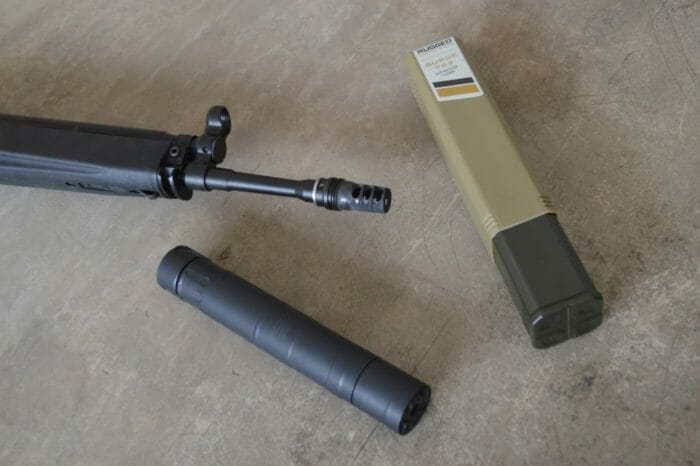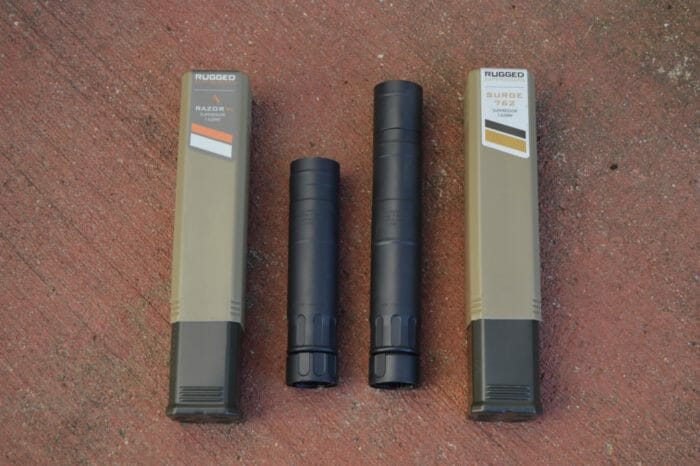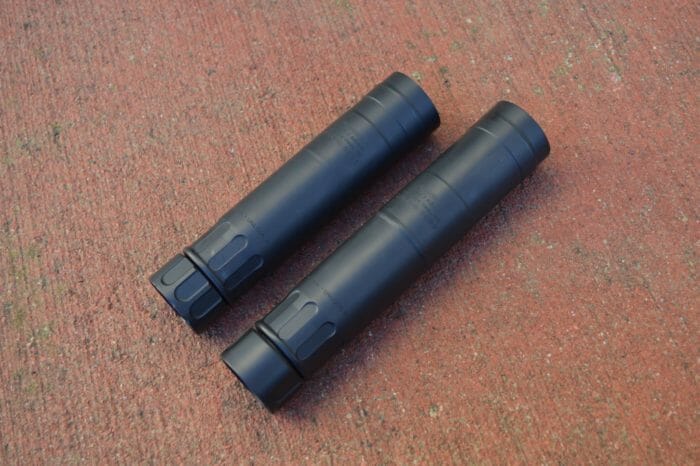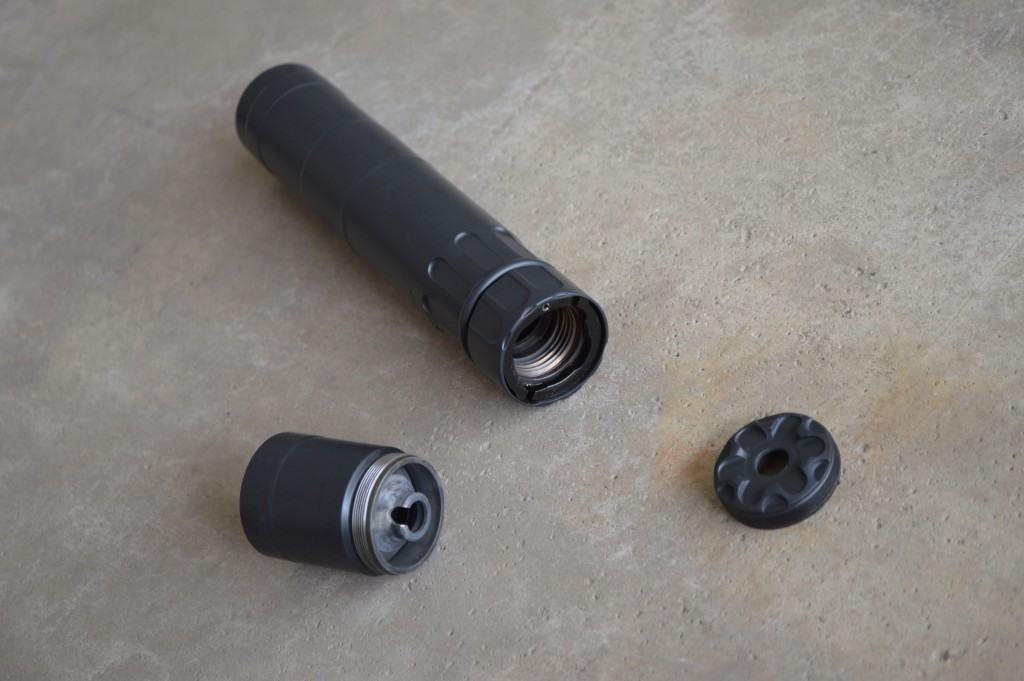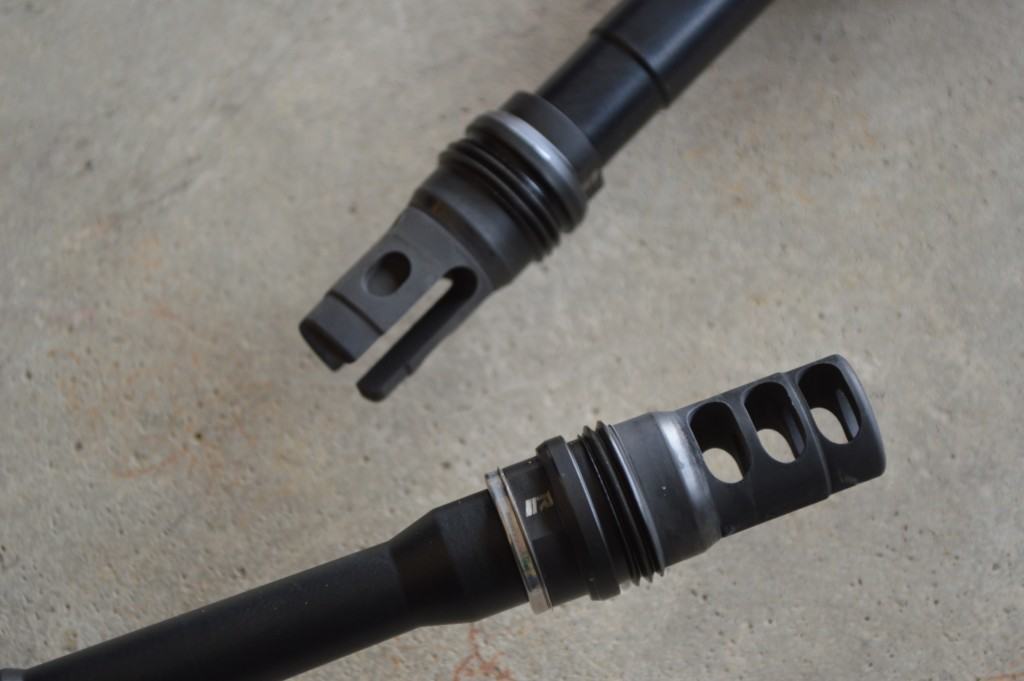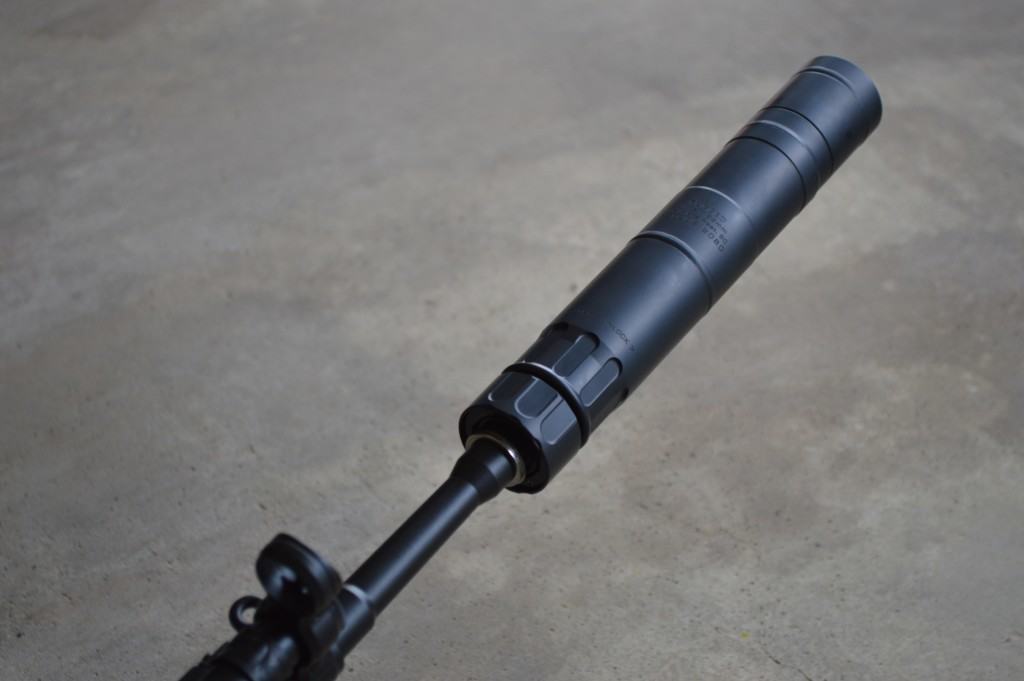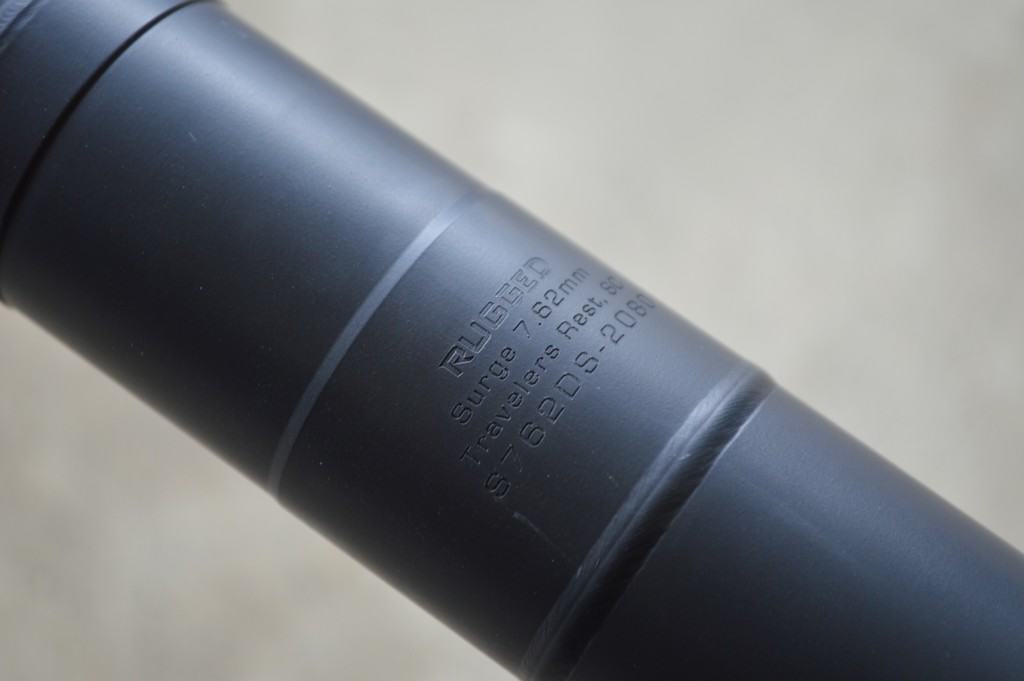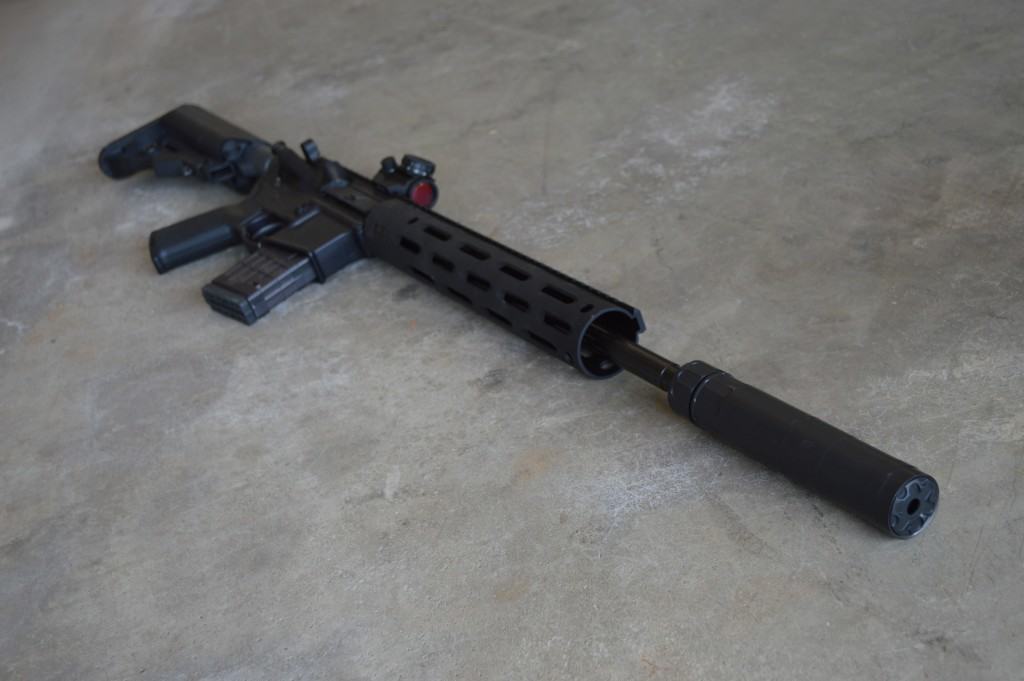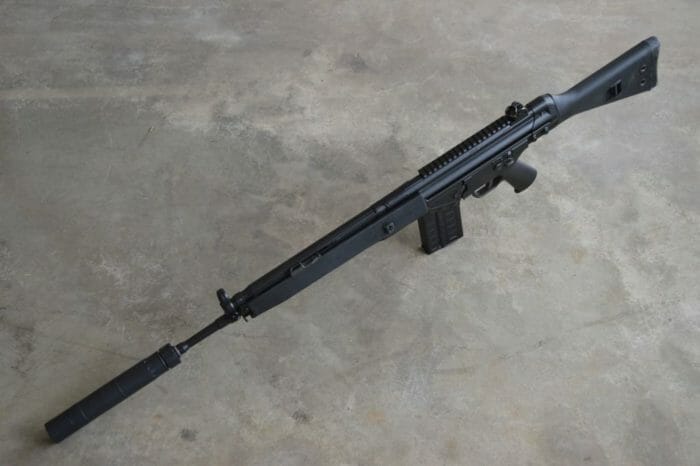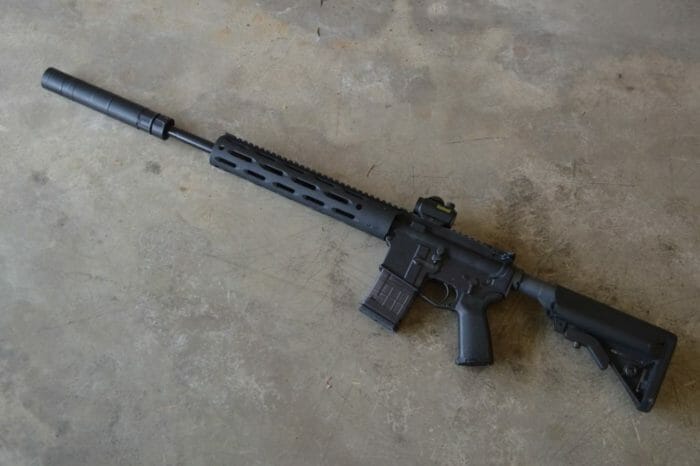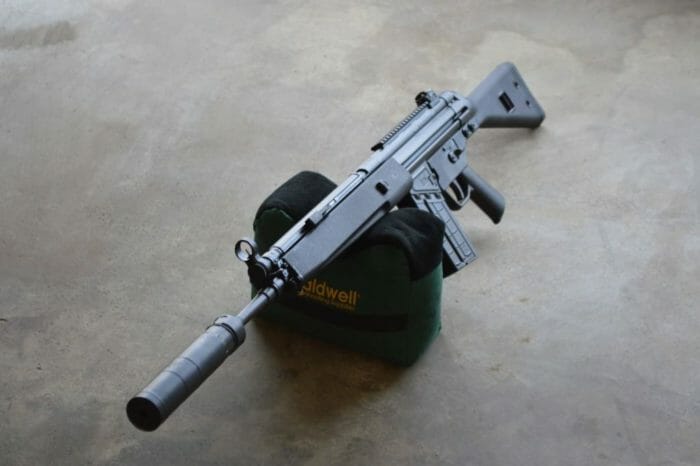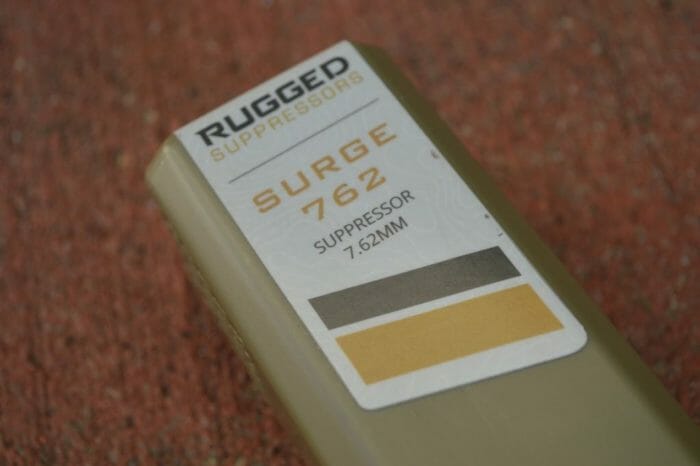Silencer Shop Authority: Rugged Suppressors Surge 762 Review
At the end of 2014, Rugged Suppressors burst into the suppressor scene when they introduced their inaugural silencer, the Surge 762. As the first adaptable-length rifle silencer sold in the US, the Surge reinforced a blossoming trend that began with pistol suppressors and has since become commonplace in many parts of the industry. Thanks to the folks at Silencer Shop, I had the opportunity to spend a few weeks evaluating Rugged’s innovative suppressor along with its little brother, the Razor 762. Today, we will see how well the Surge stacked up.
Size and Weight
Unlike practically every other rifle suppressor available today, the Surge 762 can be adapted to two different lengths. The longest configuration comes in at 9” while the short is a less cumbersome 7.5”. Like most of its rivals, the Surge is 1.5” in diameter.
Rugged’s decision to go with 9” and 7.5” options for the Surge makes sense as these seem to be the most common .30 caliber suppressor lengths used by other industry leaders. Generally, 9” silencers are geared more towards maximum performance, and the size seems to be a sweet spot for suppressing most .30 caliber cartridges. Meanwhile, 7.5” silencers tend to offer a good balance between maneuverability and performance with sound levels at or below 140 dB with most popular cartridges. As much as I would like to see the Surge be configurable for even shorter lengths, Rugged’s direction with the silencer seems well-aligned to compete with two major approaches taken by competitors.
The adaptability of the Surge is also greatly appreciated when you consider that it is in no way a light can. Sure, it is better than .30 caliber silencers of old, but at 22.2 ounces in the long arrangement and 18 ounces in its short format, the Surge is a bit weighty. Coupled with a 2.7-ounce muzzle device, the system tips scales at 24.9 or 20.7 ounces, depending on the configuration.
Mounts
The Surge uses Rugged’s Dual Taper Locking System to mount to the company’s 17-4 stainless steel flash hiders and muzzle brakes. An evolution of the ASR system that Henry Graham designed at SilencerCo/SWR, the mounts feature coarse threads that allow the suppressor to twist on and engage a forward taper, creating a gas seal. Locking the silencer to its mount requires simply twisting the locking collar at the rear of the Surge’s tube, which forces arms inside the silencer to clamp down on the mount’s rear taper. This is a significant departure from the ASR, but since all lock-up is performed using tapered surfaces, the mounting system is free of any major wear points.
As I noted in my review of Rugged’s Razor 762, the Dual Taper system is very secure when locked, but it does allow for some rotational play if enough force is applied to the can. This “issue” was most noticeable when I attempted one-handed removal of the silencer. As I moved to disengage the locking ring, the entire suppressor rotated approximately five degrees on the mount before unlocking. This hiccup was a bit frustrating, but one-handed attachment/removal is not all that high on my list of priorities.
While the silencer ships with a single3-port muzzle brake, Silencer Shop sent me both it and Rugged’s anti-resonance, 3-prong flash hider. Of the two, I was especially impressed with the brake. Mounted to my PTR-91 A3R from Atlantic Firearms, the 3-port device impressively stifled the rifle’s heavy recoil. For comparison’s sake, I would estimate that the muzzle brake made the A3R feel far more like a .300 BLK or 7.62×39 AR-15, than a .308 battle rifle.
Materials and Design
With the release of the Surge 762, Rugged Suppressors introduced the first adaptable-length rifle suppressor ever sold on the US market. To accomplish this feat, they split the Surge’s 9” tube at the 7.5” mark and threaded the remaining 1.5” extension to allow for two configurable lengths. In addition to providing additional length, the extension also houses two baffles, bringing the total baffle count to seven (five in the 7.5” format).
The Surge 762’s tube is constructed out of 17-4 stainless steel. Once somewhat of a rarity in suppressor bodies, 17-4 has recently grown popular with many manufacturers and is considered one of the most durable materials for the application. Meanwhile, the entire Surge baffle stack is made of Stellite. Not only is it the hardest alloy currently used in suppressors, but Stellite also performs very well in high-heat applications. Since Rugged considers the Surge “Belt Fed Rated,” 17-4 and Stellite are logical construction choices. For those who are interested, the Surge is rated down to 7” barrels on 5.56mm rifles and is safe as low as 12” with .308.
The baffles used by the Surge are very similar to the ones employed by Rugged’s Razor 762 that I recently reviewed. Roughly conical in shape, each member of the stack features a port, or mouse hole, to promote gas turbulence and maximize suppression. In its full-length configuration, the Surge houses seven baffles while the shorter arrangement offers five. Like many of its rivals, the Surge’s end cap can be removed, and caps with both .30 caliber and 5.56mm apertures are available.
Range Report
The 9” take on the Surge offers undoubtedly the best .300 BLK suppression I have heard to date. The silencer sounds absolutely phenomenal when paired with 220-grain subsonic rounds, and the bullet impacts 100 yards away are almost louder than the report from the rifle’s muzzle. The 7.5” arrangement is not far behind the larger setup, but the difference is perceptible. According to Silencer Shop’s testing, the 9” configuration meters at around 122 dB with subsonic .300 BLK while the 7.5” format comes in at 128 dB. At the shooter’s ear, the two formats offer essentially equal suppression (approximately 135 dB). With the numbers in mind, the quieter report of the 9” configuration was less prone to reflecting off of hard surfaces at the range and sounded quite a bit quieter, even from behind the rifle.
On my PTR-91 A3R, the gap between the two configurations was far less noticeable, mainly because supersonic ammo is always going to be pretty loud. Even so, the Surge 762 performed very well and is one of the quietest .308 cans available. Testing has shown the 9” Surge to greatly outperform its 7.5” configuration (133 dB versus 140 dB at the muzzle), but in practicality, this gap is far less noticeable. Considering that most .308 battle rifles are already quite heavy and long, I would probably run the 7.5” format most of the time with my PTR. Bolt action shooters would likely feel differently, and it is probable that they would be able to tell a greater suppression difference between the two configurations. When combined with the supersonic crack of .308 ammunition, autoloaders simply have too much action noise to appreciate the performance advantages offered by the 9” Surge.
Since I was fortunate enough to sample the Surge alongside the Razor 762, I took some time to compare the tonal differences between the two. From my experience, the Surge offers a marginally higher-pitched report than its smaller brother. The difference is small enough that if you don’t have both silencers available to compare, the discrepancy probably won’t matter.
The Surge also exhibits slightly more blowback than Rugged’s Razor. Often, one of the tradeoffs for great suppression is increased backpressure, so it is not surprising that a silencer with great meter numbers would be somewhat gassier than a louder option. Almost every .30 caliber silencer I have used with my PTR has added enough backpressure to induce failures, and the Surge did not break the mold in this regard. On the whole, both configurations performed admirably with respect to backpressure, especially compared to some 5.56mm options that are out there.
Point of impact shift (POI) is a side-effect that most suppressor owners are accustomed to fighting, but its presence and severity depend on a number of factors. The silencer itself is only one of these contributors. Mounted on my PTR and configured in the 9” format, the Surge imparted around 3 MOA of downward shift to my groups. For a silencer as heavy as the Surge, this degree of POI shift is reasonable. Most importantly, the change was consistent and predictable each time the silencer was attached.
Conclusion
If I were looking to buy a .30 caliber suppressor today (and I may be soon), the Surge 762 would most certainly be in my top two or three choices. It isn’t as light as I would have preferred, but the Surge’s adaptability adds considerable value to what is already an excellent performer. My quibbles with the Dual Taper Lock mounts are relatively minor and have been hashed out before. Simply put, the Surge is one of the best all-around options in a very crowded field of strong competitors.
Interested buyers can find the Rugged Suppressors Surge 762 at Silencer Shop for between $900 and $1,000, depending on local Powered By dealer’s pricing.
An information security professional by day and gun blogger by night, Nathan started his firearms journey at 16 years old as a collector of C&R rifles. These days, you’re likely to find him shooting something a bit more modern – and usually equipped with a suppressor – but his passion for firearms with military heritage has never waned. Over the last five years, Nathan has written about a variety of firearms topics, including Second Amendment politics and gun and gear reviews. When he isn’t shooting or writing, Nathan nerds out over computers, 3D printing, and Star Wars.

